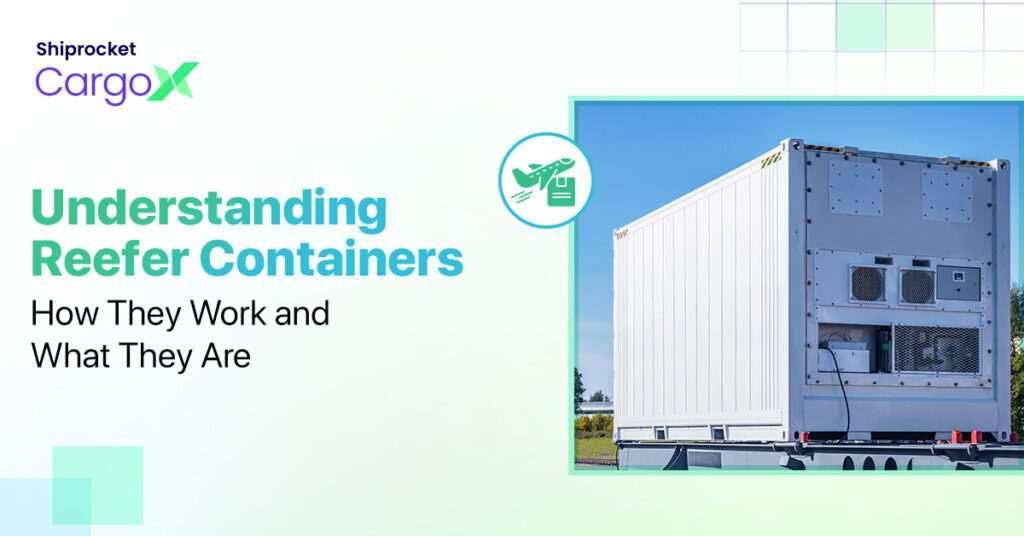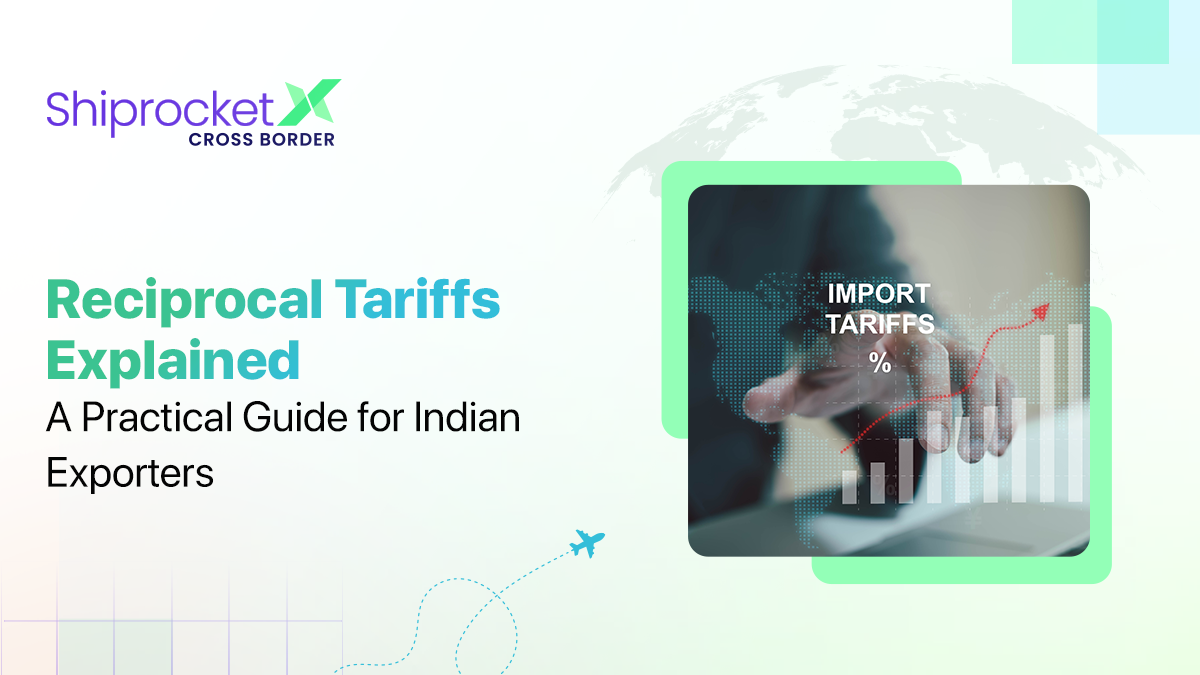Reefer Container: Meaning, Uses & Cost Guide
- Defining Reefer Containers
- Primary Uses of Reefer Containers in Shipping and Logistics
- Standard Sizes and Dimensions of Reefer Containers
- Proper Cargo Loading and Storage Techniques for Reefers
- Price Range and Factors Affecting Reefer Container Costs
- Leveraging CargoX Services for Efficient Reefer Container Shipping
- Conclusion
A reefer is used to transport temperature-sensitive goods. These are basically mobile refrigeration units equipped with powerful systems that maintain precise temperature. They are used to ship perishable items such as fruits, seafood, dairy products and other food items. Certain pharmaceutical and beauty products are also transported in refrigerated containers to maintain their freshness. The demand for these insulated metal boxes is on the rise as the need to ship temperature-sensitive products increases. Research indicates that the global reefer container market is projected to grow at a compound annual growth rate (CAGR) of 13.00% from 2023 to 2030.
How do these special containers work and what is the cost of using them? Let’s find out!

Defining Reefer Containers
Also known as a refrigerated container, a reefer is a cold storage unit suitable for transporting perishable items and other temperature-sensitive goods. A standard reefer container can maintain a temperature between -30 degree C and +30 degree C, depending on the shipment’s requirement. This preserves the freshness of such items.
It is equipped with a microprocessor which serves as a temperature recorder. It stores essential data, such as defrost activity, humidity level, return air temperature, and changes to the set point. Its power supply comes from shipboard plug-ins, diesel generators or terminal outlets during the transition.
Reefer units undergo regular inspections to ensure they comply with the safety regulations and are fit to carry perishable items.
Primary Uses of Reefer Containers in Shipping and Logistics
Reefer containers, as mentioned earlier, are used to transport products that require specific temperature conditions to maintain their freshness. Here is a look at the different types of products for which businesses use these special shipping containers:
- Food Items
These containers are primarily used to ship food items, including meat, seafood, vegetables, milk and dairy products, juices, fruits, and processed foods.
- Pharmaceutical Products
Many pharmaceutical products require temperature-controlled containers. Pharmaceutical companies use refrigerated containers to ship medicines and vaccines to remote locations.
Sometimes, reefers even carry dry cargo. They serve as non-operating reefers in such a case. Their refrigeration unit is turned off, and they become a standard dry container. This adds to their resourcefulness. Instead of returning empty after delivering temperature-sensitive goods, companies often use them to ship dry cargo.
Standard Sizes and Dimensions of Reefer Containers
Here is a look at the standard size and dimensions of reefer containers:
| Measurement | Internal Length | Internal Width | Internal Height | Tare Weight | Payload Capacity | Cubic Capacity |
|---|---|---|---|---|---|---|
| 20 ft Reefer | 17.9 ft/5.44 m | 7.5 ft/2.29 m | 7.5 ft/2.27 m | 3,080 kg/6,790 Ibs | 27,400 kg/ 60,417 Ibs | 999 cu ft/ 28.3 m³ |
| 40 ft Reefer | 37.9 ft/11.56 m | 7.5 ft/2.28 m | 7.5 ft/2.25 m | 4,800 kg/ 10,585 Ibs | 27,700 kg/ 61,079 Ibs | 2,093.3 cu ft / 59.3 m³ |
| 40 HC Reefer | 38.0 ft/11.58 m | 7.5 ft/2.29 m | 7.9 ft/ 2.40m | 4,480 kg/ 9,880 Ibs | 29,520 kg/ 65,080 Ibs | 2,380 cu ft / 67.3 m³ |
Proper Cargo Loading and Storage Techniques for Reefers
Here is a look at the cargo loading and storage methods to keep the goods safe and retain their freshness:
- Pre-cooling
Before loading a reefer, it is suggested to cool down the goods to be transported. They should be brought down to the temperature at which they are to be transported. This reduces the heat transfer into the reefer. In addition, it is necessary to pre-cool the refrigerated container and allow it to stabilise for an hour or two.
- Proper Ventilation
The goods should be elevated off the floor to allow air flow. This can be accomplished using pallets or racks. It is also important to keep the cargo below the red line marked on the reefer. Stuffing the container to the brim disrupts air circulation. It is a good practice to place the cargo 1-2 inches away from the walls.
- Set the Temperature Right
It is crucial to set the correct temperature depending on the cargo to be transported. The humidity levels should also be set accordingly.
- Load and Place Evenly
The cargo must be placed evenly to ensure proper airflow and temperature distribution across the reefer.
- Monitor the Temperature
Monitor the temperature regularly throughout the journey to ensure it is maintained at all times. Keep a check on the humidity levels and airflow vents too. To identify issues promptly and take immediate action, ensure that alarms and data loggers are functioning properly.
- Ensure Proper Power Supply
For the proper storage and preservation of goods during transit, it is essential to maintain a continuous power supply.
- Balance the Load Appropriately
The bigger and heavier items should be placed at the bottom, while the lighter goods should be placed on top. Likewise, fragile items should be placed separately in a similar manner. They should be secured with straps, wood bracing, or tie-downs.
Price Range and Factors Affecting Reefer Container Costs
Many factors affect the cost of a reefer container. This includes the distance to be covered, the type of goods to be transported, and the duration of the shipment, among others. Goods that are highly temperature-sensitive and require strict temperature and airflow maintenance involve additional cost.
Seasonal demand can also drive up prices, especially during peak export periods. Additionally, the size of the container, energy consumption, and type of temperature monitoring or tracking services used further influence the total expense.
Here is a look at the approximate price range of reefer containers in different countries:
| Location | 20 ft Reefer | 40 ft Reefer | 40 ft HC Reefer |
|---|---|---|---|
| India | $6,784 | $6,836 | $7,573 |
| USA | $13,965 | $6,315 | $7,086 |
| Europe | $7,567 | $3,849 | $6,067 |
| China | $4,706 | $6,200 | $5,060 |
| UAE | $7,000 | $5,755 | $5,308 |
Leveraging CargoX Services for Efficient Reefer Container Shipping
CargoX provides exceptional shipping services to help businesses transport their goods safely and efficiently from one location to another. We utilise the latest technology to load and store goods in reefers, as well as other types of containers. With the use of reliable tools, we monitor the temperature and air flow throughout the journey. This ensures that your temperature-sensitive goods remain fresh during their long-distance travel.
We also provide real-time shipment tracking from the warehouse to the destination, giving you complete visibility and control over your shipments. Any delays are promptly communicated, allowing you and your customers to plan ahead. This clear communication also enhances trust and satisfaction.
Our digitised workflow makes the shipping experience smooth and hassle-free. Any delay is communicated in a timely manner so that your customers can plan for receipt accordingly. Timely communication builds trust and enhances the consumer experience. Further queries and issues are handled efficiently by our customer support agents, who promptly resolve any issues, if any.
Conclusion
Reefer containers are widely used to ship perishable items. They are equipped with advanced cooling technology and an airflow mechanism to keep these goods fresh. Various kinds of food items, medicines and cosmetics are loaded carefully on the reefers and shipped to different places worldwide every day. As demand for the aforementioned items increases in the global market, so does the use of refrigerated containers.
Trusted shipping carriers, such as CargoX, take special care when loading and storing items in these containers. From real-time temperature monitoring to timely updates and expert support, CargoX ensures your goods are shipped with care and transparency.
Whether you’re new to reefer logistics or looking forward to scale globally, using the right container and partner ensures your products stay fresh and your business stays competitive.




